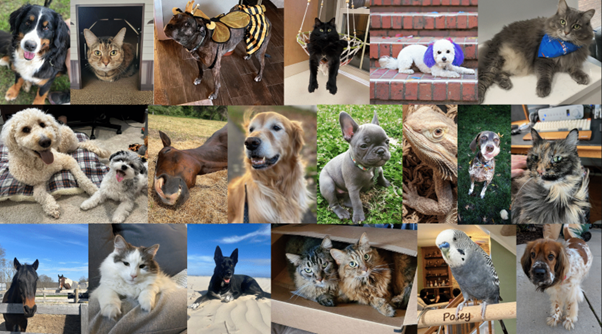NASA has built its first two-way end-to-end relay system to send messages to and from the International Space Station (ISS). It used the 1.2 gigabits per second capacity (that’s faster than your home internet) to send the astronauts currently aboard the station photos and videos of cats, dogs, and the occasional parrot.
Space communication is slow, and not just because it is limited by the speed of light. Missions such as New Horizon (the first mission to Pluto) are so short on bandwidth it took over a year to transmit a few day’s observations. Future projects have the capacity to carry more instruments with higher resolution, but that’s of little value if we can’t get the information back to Earth.
Lasers offer the capacity to greatly increase the speed with which data is transmitted. The Psyche mission to explore the metal-rich asteroid of the same name is equipped with an infrared laser system, known as Deep Space Optical Communications (DSOC). Last year it was demonstrated from a distance of 16 million kilometers (10 million miles) away, 40 times the distance of the Moon.
A month later, having traveled an extra 3 million kilometers, DSOC got to the important stuff. It had Psyche send a video of a cat, Taters, chasing a laser dot, naturally.
This, however, was all one-way. The video was uploaded to Psyche before launch. There’s no current method to rapidly send anything like that much data to such a distant spacecraft.
The ISS is a different matter, however. Starting with a set of ground staff’s pet images and videos data was transmitted from the mission operations center at Las Cruces, New Mexico, to ground stations from Texas to Hawaii. At these, it was modulated into infrared laser signals and beamed into space.

Godspeed the photos of NASA pets, many dressed up in their Sunday best.
Image Credit: NASA/Molly Kearns
Instead of being sent directly to the ISS, as you might expect, the signals went to satellites in geosynchronous orbits 36,000 kilometers (22,000 miles) up. From there everything was relayed to a receiver temporarily mounted on the outside of the ISS. All those precious bits were returned to Earth, confirming the two-way nature of the system.
In an era when we are used to information zipping around the planet at light speed, this may not seem that impressive, but the technical challenges were immense. Infrared lasers can carry more information than radio waves, but over these distances – let alone the ones NASA hopes to use such systems for in the future – delays can cause crucial data to be lost. The demonstration tested out a novel “store-and-forward” process, where data quality can be assessed, and either forwarded immediately or stored for the future as needed.
A High-Rate Delay Tolerant Networking (HDTN) system was developed to allow this to occur four times faster than existing capacities. Advances like these will be needed if Artemis Mission astronauts are to be able to use the Internet, rather than transmitting their footage via grainy black-and-white like Apollo.
“Not only have they demonstrated how these technologies can play an essential role in enabling NASA’s future science and exploration missions, it also provided a fun opportunity for the teams to “picture” their pets assisting with this innovative demonstration,” NASA’s Kevin Coggins said in a statement.
While we applaud NASA for the technology, and the material they chose to send, we can’t help thinking they missed an opportunity. The pets in question belonged to astronauts Randy Bresnik, Christina Koch, and Kjell Lindgren as well as NASA employees who have never been to space. We particularly approve of Astrid the Beagle, given the breed’s association with scientific discovery.
Nevertheless, none of these astronauts are currently aboard. Surely, the current crew misses their own pets and would have enjoyed a video from whoever is minding them? Next step, astronauts face timing with their excited dogs (the cats won’t care).
Source Link: NASA Is Using Its Fancy New Laser System To Send Astronauts Videos Of Pets